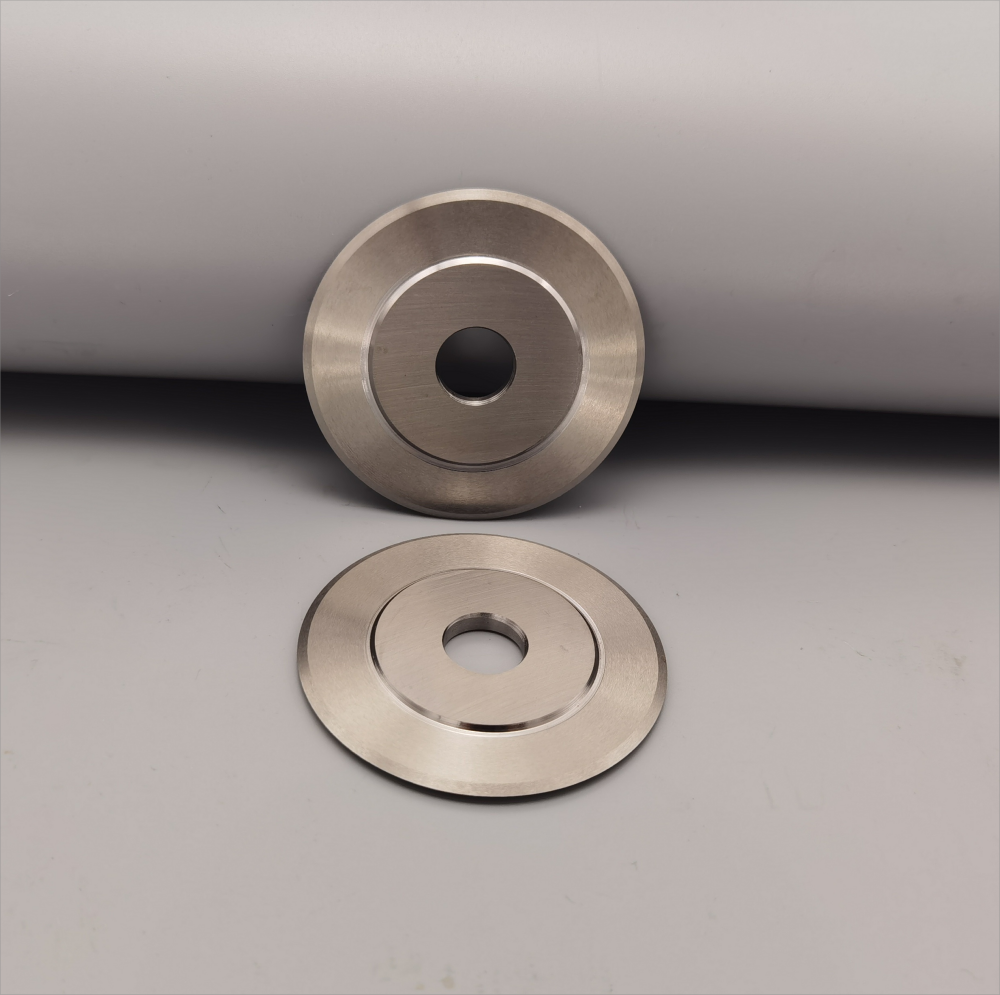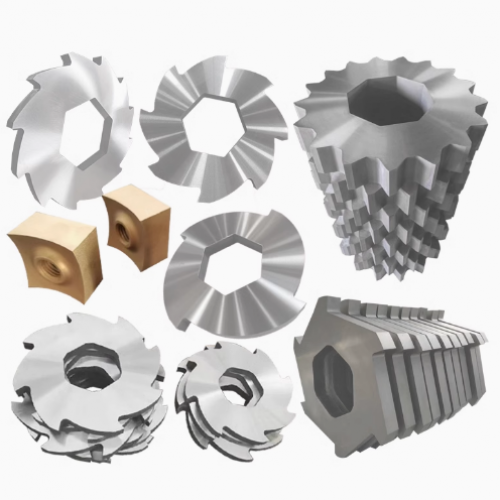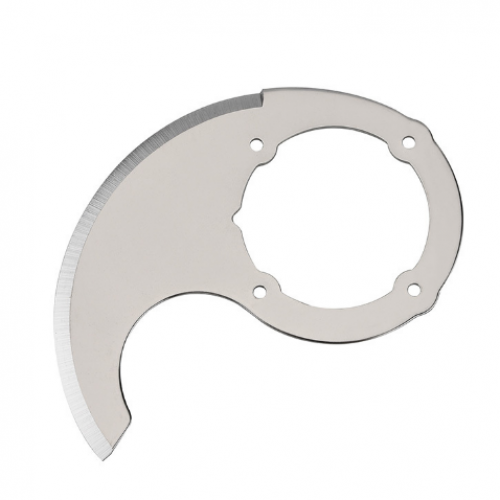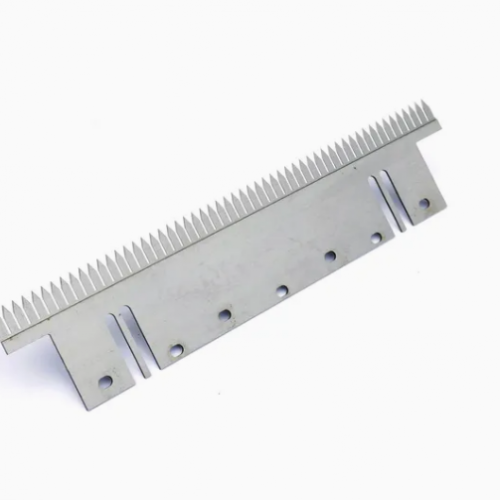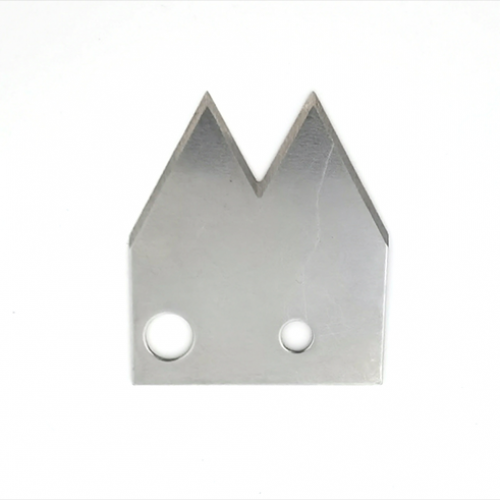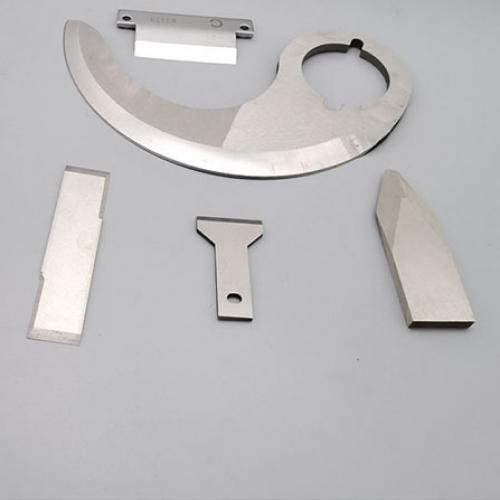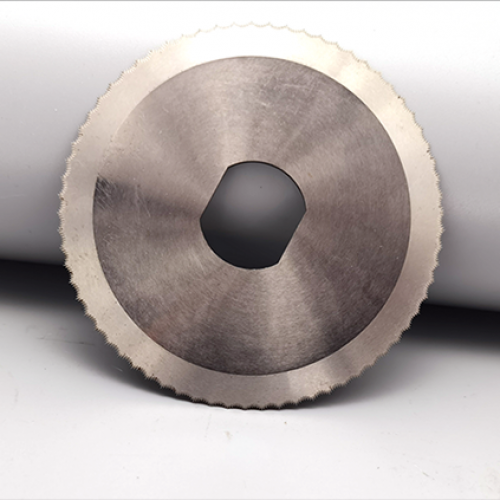Printing Industry knives
I. Main Types and Applications
Guillotine Blades (Paper Cutting Blades)
Applications: Cutting paper, cardboard, films, and similar materials.
Features: Sharp edges with high flatness; used in guillotine cutters or flatbed die-cutting machines.
Subtypes: Straight-edge blades, serrated-edge blades (reduces cutting resistance).
Die-Cutting Blades
Applications: Precision cutting of complex shapes for packaging boxes, labels, stickers, etc.
Features: High-hardness steel, customizable edge shapes (e.g., rounded or sharp corners); paired with die-cutting plates.
Slitting Blades (Circular Blades)
Applications: Slitting wide rolls into narrow strips (e.g., films, aluminum foil, non-woven fabrics).
Features: Circular design for high-speed stability; commonly used in slitting machines.
Doctor Blades
Applications: Scraping excess ink from gravure rollers in printing presses.
Features: Thin, flexible, and wear-resistant; require regular replacement for print clarity.
Laser Engraving Blades
Applications: High-precision engraving or cutting of specialty materials (e.g., anti-counterfeit labels, electronic components).
Features: Laser-integrated technology for micro-scale patterns.
II. Core Materials and Manufacturing
Common Materials
High-Carbon Steel: High hardness for general-purpose cutting.
Alloy Tool Steel (e.g., D2 M2 M42): Balances wear resistance and toughness; widely used for die-cutting.
Tungsten Carbide (Hard Alloy): Ultra-hard, long-lasting; ideal for dense materials.
Ceramic-Coated Blades: Reduced friction and extended lifespan.
Key Processes
Heat Treatment: Quenching and tempering to enhance hardness and toughness.
Precision Grinding: CNC grinding ensures edge straightness and angle accuracy (e.g., 30°, 45° edge angles).
Surface Treatments: Chrome plating, TiN (Titanium Nitride) coating for corrosion and wear resistance.
III. Key Industries
Printing: Book trimming, label die-cutting.
Packaging: Carton forming, flexible packaging slitting.
Electronics: Precision cutting of thin films and flexible circuits.
Textiles: Non-woven fabric and textile roll slitting.
IV. Selection and Maintenance Tips
Selection Criteria
Machine Compatibility: Match blade dimensions (e.g., diameter, bore size) to equipment.
Material Suitability: Choose hardness/coatings based on substrate (e.g., anti-stick coatings for plastics).
Brand & Certification: Opt for reputable brands (e.g., Böhler, SKD) and ISO-certified products.
Maintenance
Regular Sharpening: Use blade grinders to restore edges and avoid burrs.
Rust Prevention: Apply anti-corrosion oil during storage.
Installation Checks: Ensure secure mounting to prevent misalignment or vibration.
V. Common Issues & Solutions
Issue 1: Short Blade Life
→ Causes: Material mismatch or improper heat treatment.
→ Solutions: Upgrade to coated blades or carbide materials.Issue 2: Rough Cutting Edges
→ Causes: Worn edges or incorrect installation angle.
→ Solutions: Re-sharpen blades and recalibrate angles.Issue 3: Chipped Edges
→ Causes: Overloading or hard contaminants in materials.
→ Solutions: Reduce cutting pressure; pre-screen materials.
VI. Future Trends
Smart Integration: Sensors for real-time wear monitoring.
Sustainability: Recyclable materials and low-energy coatings.
Ultra-Precision: Nanoscale cutting for ultra-thin materials (e.g., lithium battery separators).
Proper blade selection and maintenance significantly boost productivity and reduce costs. For customized solutions,consult specialized PLMK based on your operational needs.


